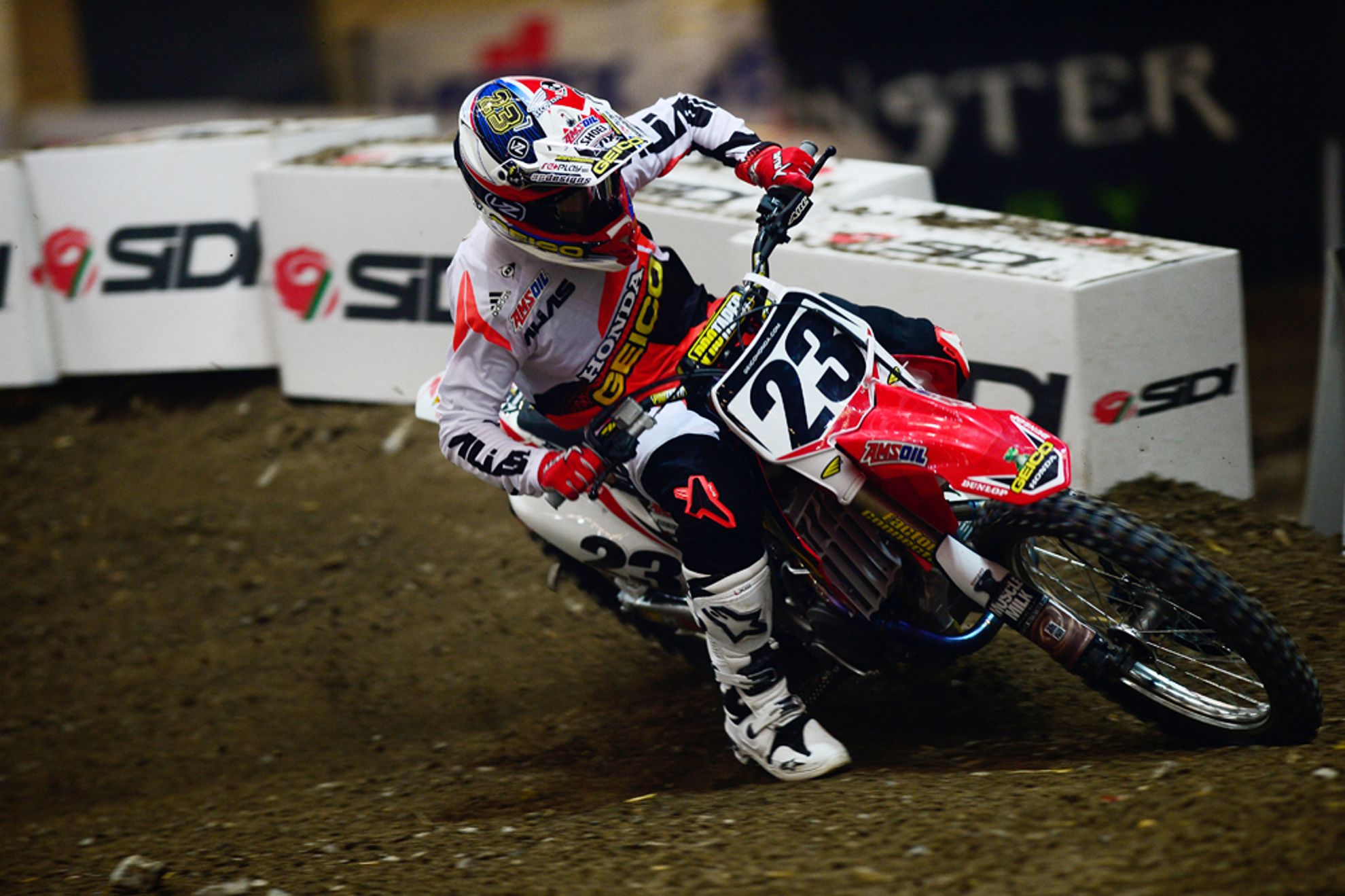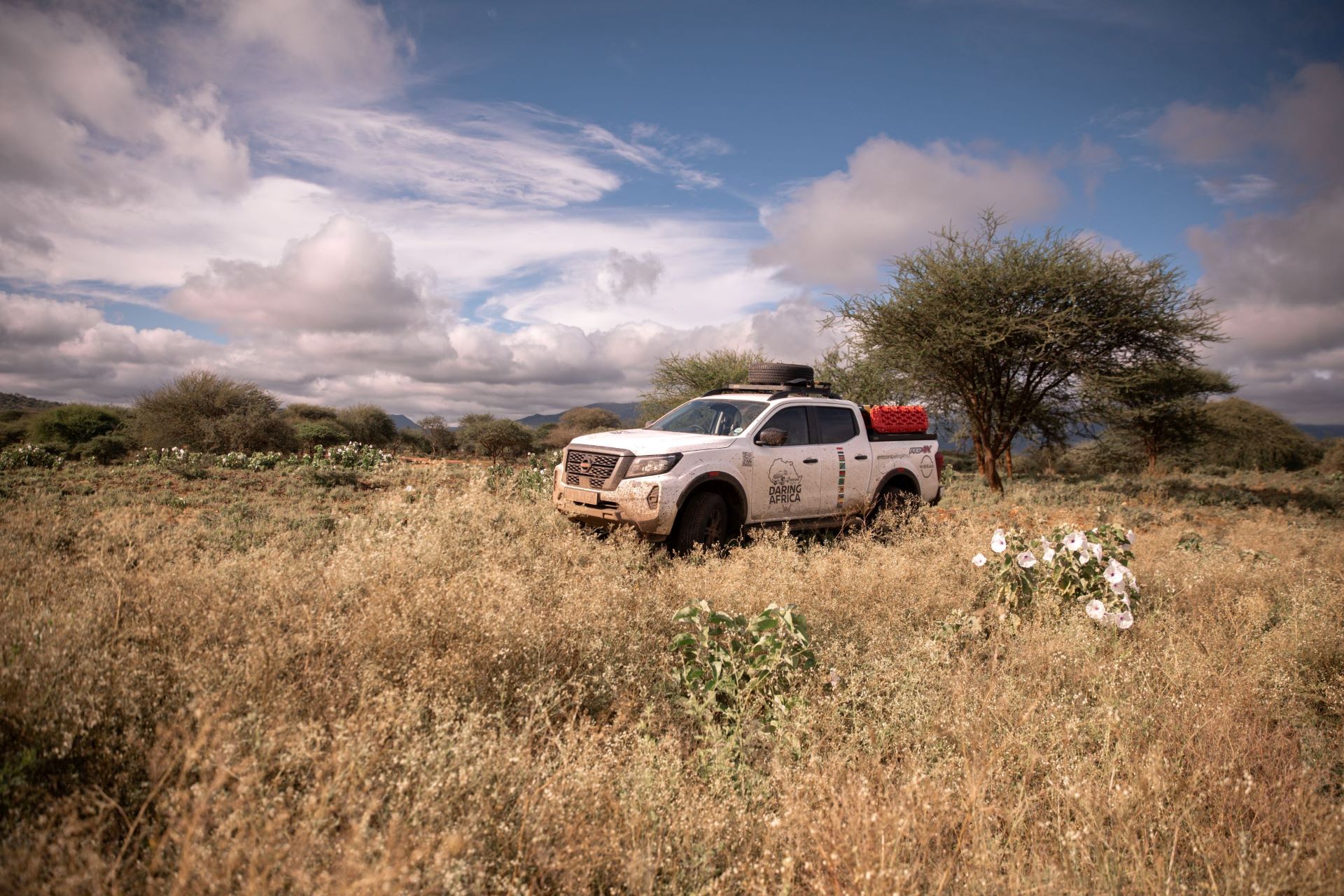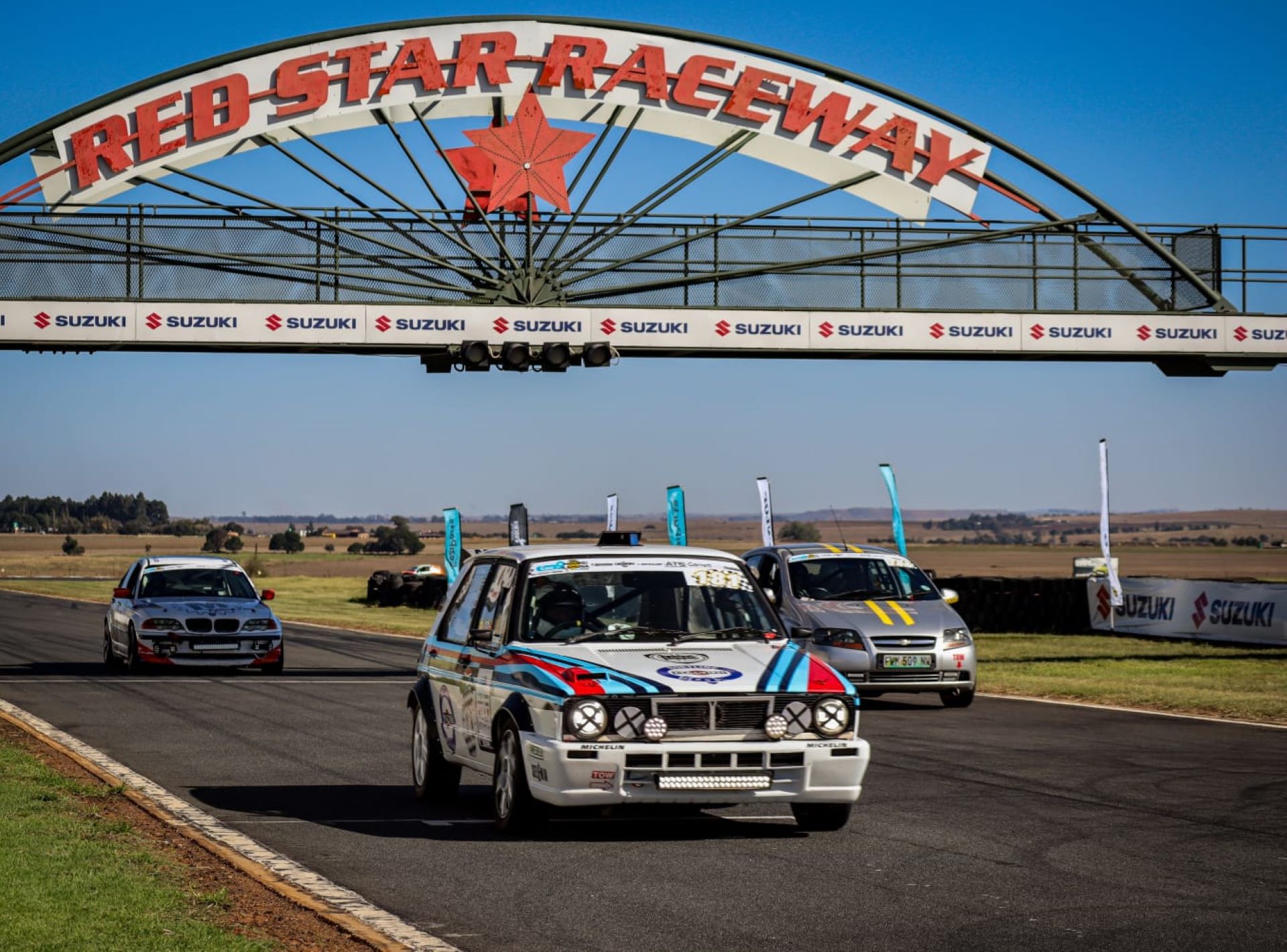The Sport, Inside and Out
Each year professional Supercross and motocross racing continues to gain popularity with men and women alike, and 2013 was no different. With the world’s best riders battling it out each weekend on some of the most grueling and treacherous tracks across the country, it is no surprise the live attendance rate and television viewership continues to increase at each event. The Supercross and motocross championships stand as the premier racing series of the American Motorcyclist Association (AMA), with 29 events spanning the country. Most riders contest both series, with the 17-round AMA Supercross series, an FIM World Championship, starting in January and ending in early May, followed immediately by the 12-round AMA Motocross Championship, which runs to the end of August. Together these events allow race fans to enjoy eight months of intense competition.
Supercross consists of indoor man-made race courses built on the floors of baseball and football stadiums within major cities across the country. The tracks are extremely technical and showcase big jumps, whoops, tabletops and other obstacles that place a premium on the rider’s acrobatic skill, timing and all-out courage. Supercross features two classes and displacement ranges. In the 250 Supercross class, racers may run a four-stroke engine no larger than 250cc in displacement. The 250 class season is divided into two regional series, East and West. Each region consists of nine rounds, concluding in Las Vegas, NV, with the Davey Coombs Sr. East-West shootout. The Supercross class allows four-stroke engines no larger than 450cc, and competes in all 17 rounds of the series.
Each event is structured the same with timed qualifying practices during the day, two heat races, a consolation race and main event in each class. Each heat race is eight laps for the 450 class and six laps for the 250 class, with the top nine riders advancing to the main event. The other racers are relegated to the consolation race, known as the Last Chance Qualifier, which is four laps in the 250 class and six laps in the 450 class, with the top two advancing. The main event is 15 laps in the 250 class, and 20 laps for the 450 class, with 25 championship points awarded for the race win. Beginning in 2012, the rider in each class who is currently leading the championship points chase carries the red number plate.
In motocross, the original format for this style of competition, races are conducted on outdoor tracks of approximately 1 mile or more in length that utilize the natural topography along with built-up jumps and added obstacles. The summer’s grueling 12-race series is a true test of a rider’s physical and mental toughness, as they are forced to battle through two 30-minute-plus-two-lap motos. At the end of the day the results of the two motos are combined to produce an overall score and winner in each class. Motocross also has two classes, 250 and 450. There are no regional divisions in motocross and both classes run the entire 12-round series.
After record-setting attendance figures in 2011, the AMA Supercross series continued to see incredible numbers in both event attendance and live television viewership during the 2012 season. With four sold-out events, and an average attendance of 50,000 people per race, it was an exciting year for the sport. In addition, a new television package with SPEED and CBS Sports produced the highest ratings the sport has ever seen. The package also helped expand the reach of racing to a total of 172 international territories in North America, Europe, South America, Africa and Oceania.
The AMA Supercross series continued to see incredible numbers in both event attendance and live television viewership during the 2013 season. With three sold-out events at Anaheim 1, Atlanta and the finale in Las Vegas, along with an average attendance of more than 50,000 people per race, it was an exciting year for the sport. St. Louis and Indianapolis were near sellouts with more than 60,000 people in attendance. The series also saw an increase in pit attendance over the 2013 season with 314,639 fans taking part in the pit parties. In addition, Supercross’ expanding television package hit a milestone in 2013 when the National Television of Arts and Sciences (NATAS), in the category of Outstanding Live Events Turnaround, nominated the AMA Supercross, an FIM World Championship, broadcast from Salt Lake City’s Rice-Eccles Stadium (2012) on CBS in the 24th Annual Sports Emmy Awards.
In 2014 the racing excitement will return to 13 of the previous venues, including Angel Stadium in Anaheim, CA, for the season opener, as well as rounds three and five, Chase Field, Overstock.com Stadium, Qualcomm Stadium, Cowboys Stadium, Georgia Dome, Lucas Oil Stadium, Daytona International Speedway, Rogers Centre, Edward Jones Dome, Reliant Stadium, Century Link Field, and Sam Boyd Stadium for the finale. This year’s campaign will showcase two new stops at Ford Field in Detroit, MI, and MetLife Stadium in East Rutherford, NJ.
The AMA motocross championship will return to the most premier motocross facilities in the nation in 2014, including Hangtown, Thunder Valley, High Point, Budds Creek, Red Bud, Washougal, Spring Creek, Unadilla, Muddy Creek and Miller Motorsports Park. Returning to the circuit after a four-year hiatus is Glen Helen Raceway in Devore, CA, which will host the season opener in May. Joining the schedule for the first time is the Indiana National in Crawfordsville, IN.



